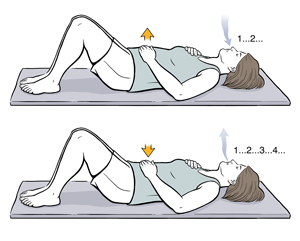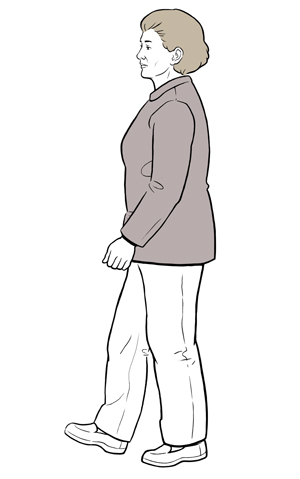Exercise Program for Herniated Disc
Movement is one of the best ways to treat back pain. Your healthcare provider may recommend exercises to help you manage your pain, speed healing, and prevent future flare-ups.
Talk to your healthcare provider or physical therapist about which exercises are best for you and your rehabilitation goals.
Start each exercise slowly. A little discomfort is normal but stop any exercise that causes pain.
Belly Breathing
-
Lie on your back with your knees bent and feet flat on the floor. You can also perform this exercise while lying in bed with your knees supported by pillows.
-
Place one hand on your chest and one hand on your belly.
-
Breathe in slowly through your nose. Count to 2. As you breathe in, your belly should move out against your hand. Your chest should stay still.
-
Breathe out through your mouth with your lips pursed together. Count to 4. As you breathe out, you should feel your stomach move in.
-
Practice this breathing method for 2 minutes.
Tip:
-
Counting as you breathe in and out helps keep your breathing slow and steady.

Prone Lying
-
Lie face down on your stomach, either on the floor or in bed. You can place a pillow under your stomach and pelvis for comfort if needed.
-
Keep your arms relaxed at your side. Keep your breathing relaxed.
-
Continue to lie in this position for 3 to 5 minutes.

Prone Press Up
-
Lie face down on your stomach. Your elbows should be tucked into your sides.
-
Press up on your forearms, keeping your hips on the floor.
-
Hold for 5 to 10 seconds. Then lower slowly.
-
Repeat 5-8 times.
Tips:
-
Relax your stomach muscles and low back completely as you press up.
-
Stay within a pain-free range.

Walking
Walking is a great way to improve blood flow and ease pain. Even short walks can help. Make a habit of walking every day. If walking makes your pain worse, try walking in a pool to reduce the pressure on your back.
-
Start by walking for 10 minutes every day.
-
Over time, work up to walking for 30 minutes or longer.
